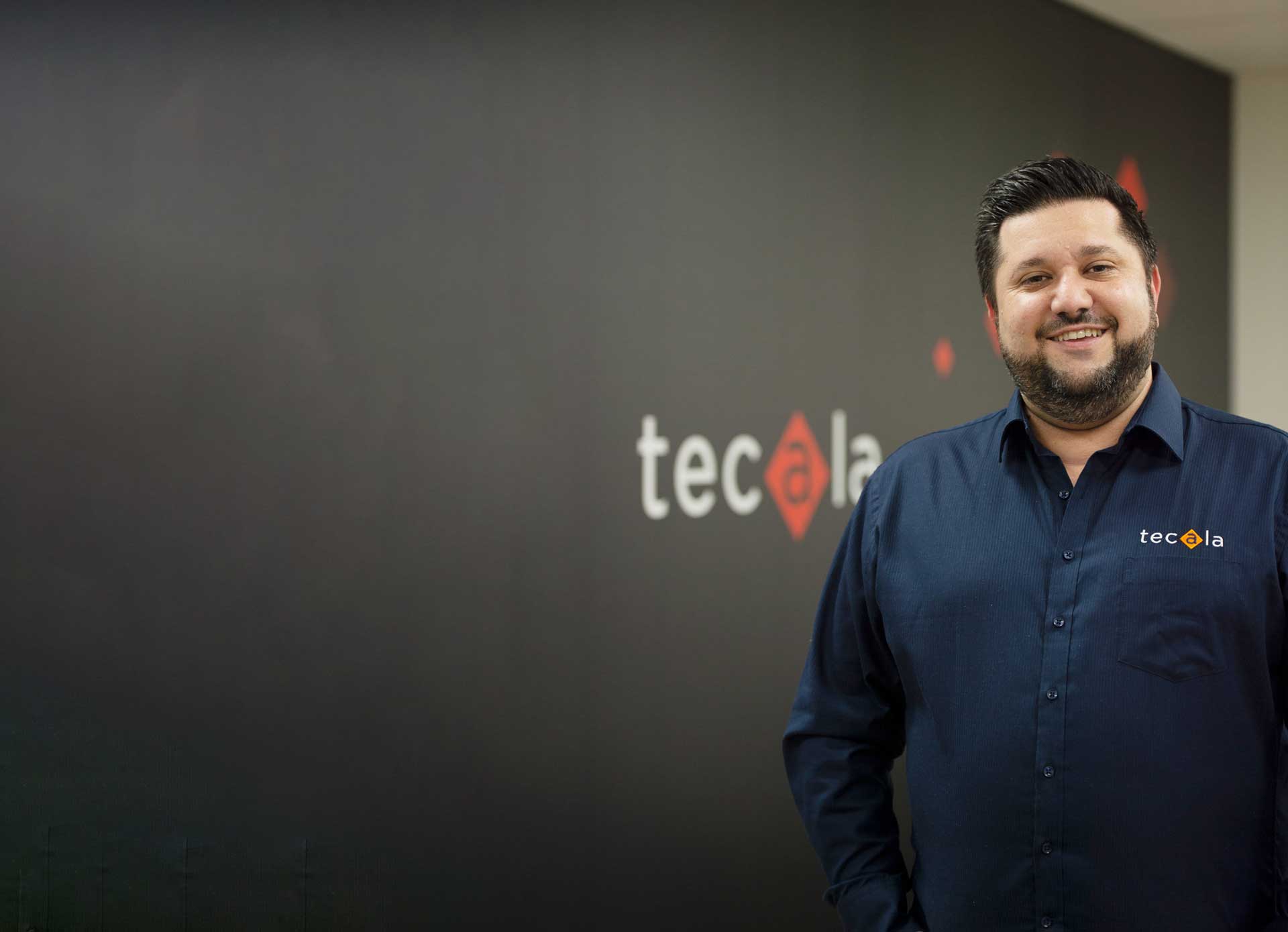What would you describe as your most memorable achievement?
Over the past decade, Tecala has been through a massive transformative journey. Back in 2010, we recognised customer need was shifting and this whole movement now known as ‘IT as a service’ was beginning to emerge. We knew we had to evolve apace, from traditional value added reseller to managed services consultancy. It was a big shift and meant fostering a much deeper engagement with our customers. Establishing our strategic objectives, bringing in the right people, investing in training and resources…leading Tecala through that change has been the biggest achievement of my career.
What first made you think of a career in technology?
My father was very mechanically minded and I think I took after him – pulling things apart and understanding how they worked was a passion we shared. In the 1980s, PCs were incredibly expensive and my parents couldn’t have afforded to buy them at retail prices but my uncle was senior at IBM and every year he’d be given a new one. The old one would come to me and I’d have a ball, tinkering around with it. That sparked a passion for technology which has yet to subside!
What style of management philosophy do you employ in your current position?
Being heavily involved in things without micromanaging is a balance I hope I pull off the majority of the time. As Tecala has grown, we’ve been able to appoint some great leaders, so my focus is on being clear about our business objectives and how we’re going to achieve them. That wasn’t always the case – when you’re smaller, you do everything – but today my role is strategic rather than operational. I’m still very close to our customers and very engaged in the technology industry and I see bringing that feedback into the business as an important part of my role too.
What do you think is the current hot technology talking point?
Cloud and digital transformation remain underlying themes but right now what we’re hearing a lot more about is automation. COVID has really brought conversations about using technology to optimise business processes to the fore. Companies whose business models have depended on offshoring are now looking for ways to bring some of those jobs back to Australia. Automation and operational efficiency can enable them to do it cost competitively. We think it’s a fundamental shift which could take many years to play out.
How do you deal with stress and unwind outside the office?
I’m very into cars and motorbikes. Motorsports force you to concentrate exclusively on what you’re doing, which means you have to block out everything else. On a really long ride, you’re very exposed to the elements and absolutely present in the moment – your phone isn’t connected and you’re not even listening to music. Those people who know me well may be surprised by this, but I’ve also started meditating – and I’m really enjoying it. It’s quite similar to motorsports, in that you unwind and relax by blocking out the ‘noise’.
If you could go back and change one career decision, what would it be?
It may be a bit naff to say but I wouldn’t change anything. I’m someone who thinks we are where we are as a result of a series of decisions – good, bad and indifferent. I’m in a fortunate position, with a great business and a great team and a fantastic bunch of customers, so changing something back then might mean I wouldn’t be where I am today!
What do you currently identify as the major areas of investment in your industry?
Automation of systems and processes is a huge focus in the cloud and managed services sphere. We’ve put a lot of effort into streamlining ours, to remove complexity and speed up the pace at which we can execute on support tasks and make improvements for our customers. That has a huge payback for us and them. It improves their experience and, in turn, improves the service they’re able to offer to their customers.
What are the region specific challenges when implementing new technologies in APAC?
Aligning yourself with vendors that are genuinely focused on this market is a perennial challenge. Tecala works predominately in Australia and promoting and fostering the growth of the local ICT industry is really important to us. There are global vendors that don’t have much of an interest in the region. Obviously they’re interested in selling their product, but being willing to genuinely support local partners is less common. Getting access to the right skills can also be tricky. We do our bit to build the pool by fostering young talent and offering employees a clear career path.
What changes to your job role have you seen in the last year and how do you see these developing in the next 12 months?
Covid has forced many of our customers to make changes to their businesses and that’s meant us staying very close to them. Instead of quarterly or even annual catch-ups, I’ve been doing monthly check-ins, to ensure we’re giving them the tactical and practical support they need. I see that high-touch interaction continuing over the next 12 months but with a different enphasis. The initial conversation was about ‘how do we get through this period?’ but customers are now thinking more strategically about how they can capitalise on emerging opportunities. Being involved in that process and developing customised technology strategies to support their growth promises to be incredibly exciting.
What advice would you offer somebody aspiring to obtain a C-level position in your industry?
A lot of people who aspire to a leadership role learn on the job, as I did. But leadership is a very different discipline from most of the individual contributor roles within an organisation and you’d do well to get some insights before you start having the experiences. There are some really good leadership development programs out there and having that training could make a big difference to your performance when you score a senior role. Finding a mentor is also critical because it can be lonely at the top. Having someone who can understand the challenges you’re facing makes a massive difference.
Read the full story here.







